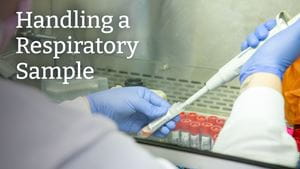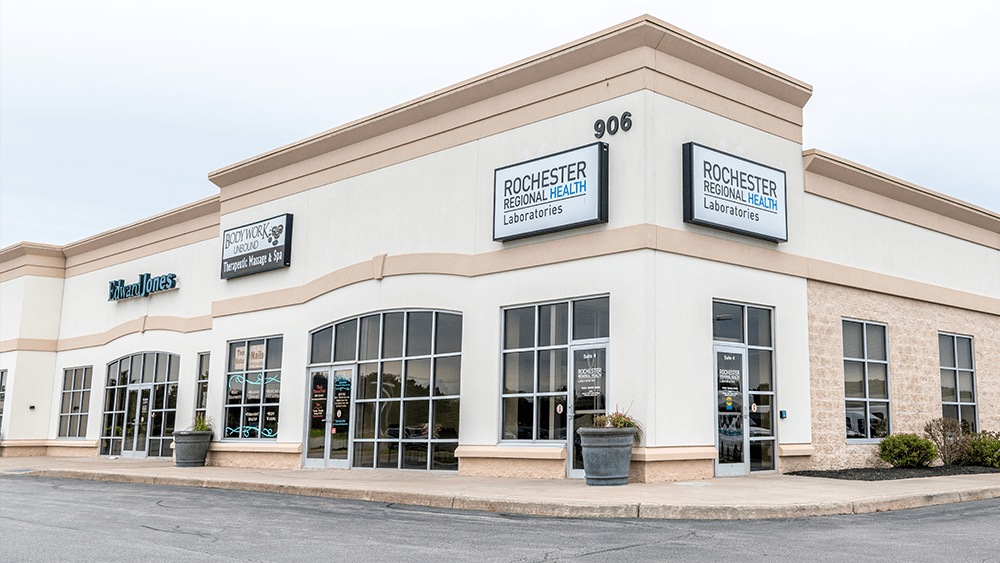
As part of Lab Professionals Week, Rochester Regional Health is exploring the many ways that our medical laboratory teams work together to keep our patients as healthy as possible.
These teams run hundreds of tests each day, ranging from routine bloodwork to cancer biopsies. Each person who is part of this effort is critical to protecting the well-being of our community.
Aryn Miller, a microbiologist with Rochester Regional, walks us through the timeline of how a patient has a respiratory sample taken and tested for pneumonia.
Depending on where a patient is located, a sample is collected using different methods. In a hospital or other in-patient setting, the sample is collected by a nurse. If the patient is in an outpatient setting, they can collect it themselves – depending on the type of sample required for testing.
Most commonly, patients submit a sputum sample, which is done by coughing phlegm into a special medical cup. Other patients will have a bronchoalveolar lavage or bronchial wash. For this method, a provider uses a long, thin tube called a bronchoscope to examine your airways, then puts a small amount of saline through the bronchoscope to wash the airways and sucks it back up to be used as a sample for testing.
For intubated patients, a tracheal aspirate is collected by passing a catheter through a ligament in the neck and removing a small sample of cells for diagnosis.
Once properly labeled, any outpatient samples are collected by couriers and dropped off at the lab. For in-patient samples, a nurse brings them from the patient’s room or bed to the labs.
A specimen management technician will pick up the samples and verify the information on each sample. Using the computer system, they mark the sample as being received before sending it on to a medical laboratory technician (MLT).
An MLT performs supervised routine tests in many areas of a clinical lab, including plating the specimen. This means they remove a portion of the specimen from its container and place it onto an agar plate – a Petri dish containing specific chemicals depending on the type of test being run.
Agar plates used in respiratory testing include:
“Each plate is specialized to grow a different type of organism so we can test for different types of bacteria that may be growing,” Miller said.
After the specimen is plated, a plate is incubated for a period ranging from 18-24 hours.
The following day, a medical technologist removes the plate from the incubator and examines the biochemical results to see what, if anything, grew on the plate.
Medical technologists assess each specimen to look for normal flora, or bacterial growth. Everyone has normal flora, bacteria, and yeast that live inside their body. There are good types of microorganisms and harmful types of microorganisms. Labs want to make sure there are no pathogens, so they look for:
Once the initial assessment is done, the lab sends the sample to another medical technologist who works with a mass spectrometry machine that breaks down any bacteria and has the proteins from inside bacterial cells fly inside a vacuum. The mass spectrometry machine is about 6 feet tall, 3 feet wide, and is hooked up to a computer system that analyzes the size and charge of all the proteins inside bacterial cells. The pattern that emerges is specific to the species of bacteria.
The slide placed inside the machine contains up to 48 samples so the lab can test several patients at the same time. After waiting approximately 15-45 minutes, medical technologists check the results on the mass spectrometry machine against the biochemical test results to ensure everything matches.
Once medical technologists have identified what type of bacterial organism is in the sample, the most important part of the microbiology lab is sensitivity testing. The bacteria are tested against a selection of antibiotics to determine which one responds best to the sample. Antibiotic testing takes an additional 18-24 hours.
After the sensitivity testing is complete, the final step is to send the results along to the patient’s provider through the CareConnect portal.
For patients who are in a hospital or other in-patient setting for longer periods of time, providers often end up requesting additional types of testing because a patient’s response to a disease and subsequent treatment can change over time.
If the bacteria found in a patient is particularly resistant or a patient has specific conditions or allergies that prevent any of the commonly-tested antibiotics from being a good option for treatment, providers can work with the Infectious Diseases Division to request additional antibiotic testing as needed.
As a microbiologist, Miller said she takes pride in what her team members will do to help people who are receiving care through Rochester Regional Health. She regularly sees her colleagues stay late or take an extra shift because they know patients come first. If she and her team are not working in the lab, providers can’t get test results and those patients can’t get better.
“I know that I’m making a difference in the lives of patients through what I do,” Miller said. “I love that my love of science can help patients heal.”
